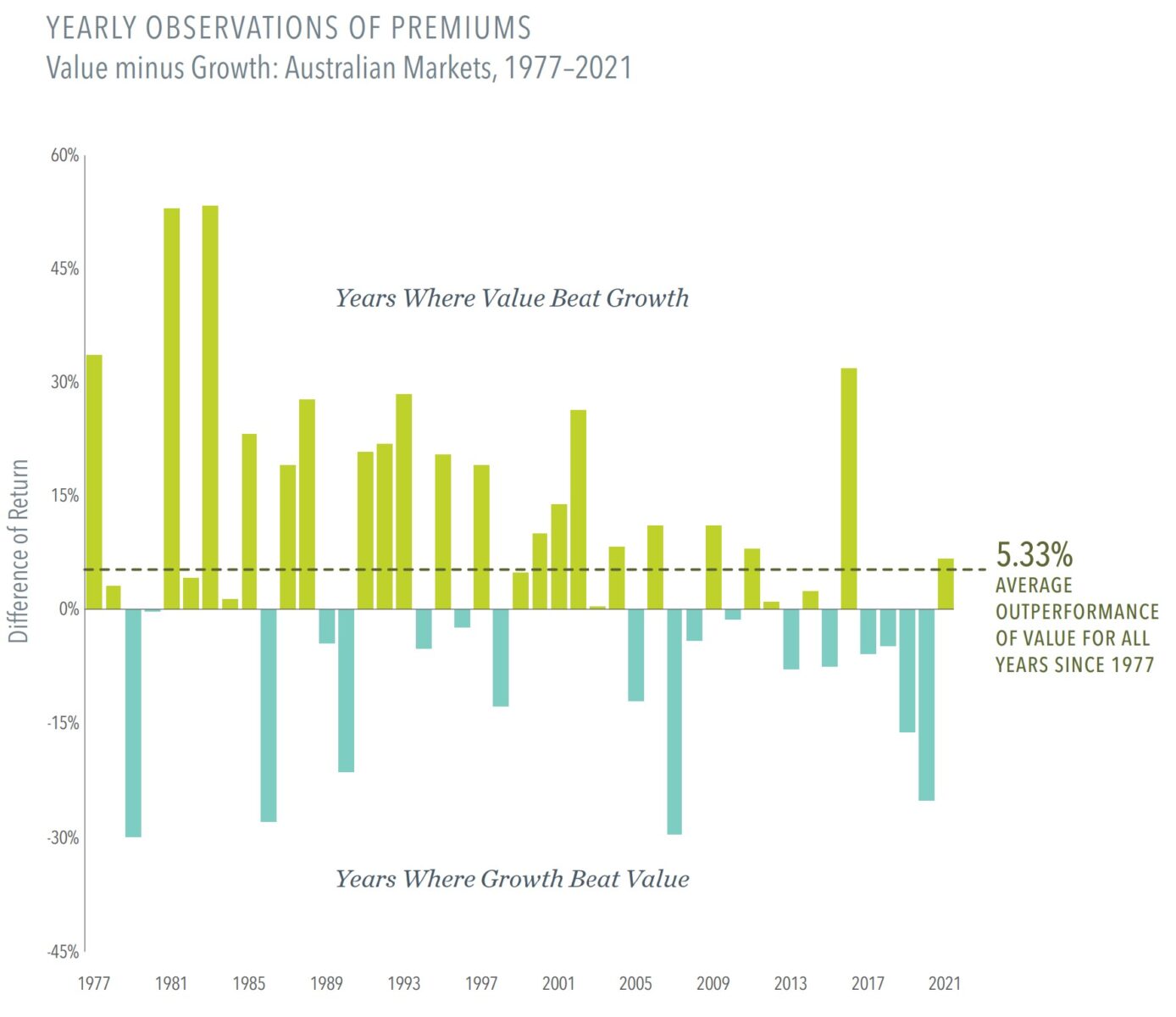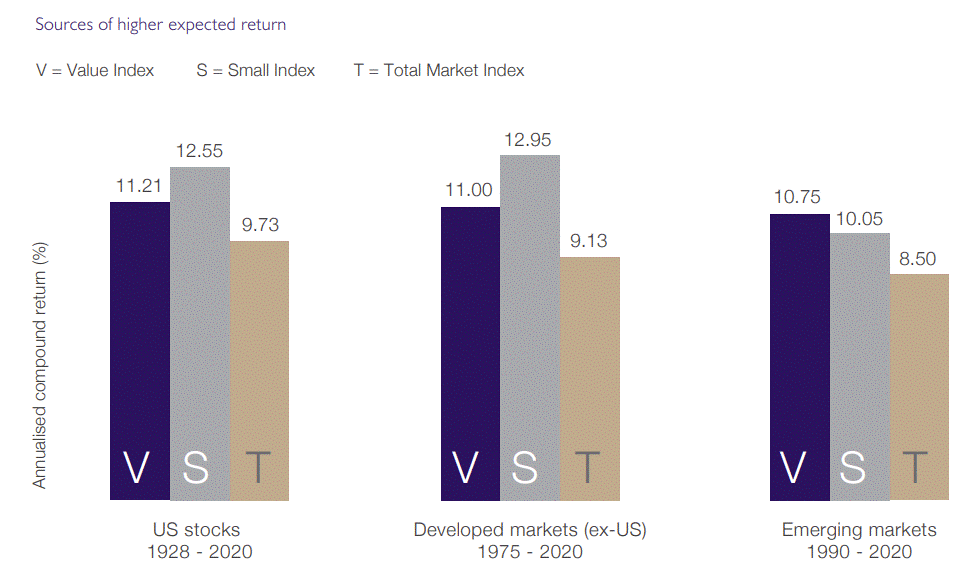The work of Fama & French showed the three key drivers of long term performance for equities are size, value and profitability.
When it comes to evaluating value shares, nearly 100 years of data support the notion that the lower a share’s relative price, the higher the expected return.
Historically, value shares have outperformed growth stocks.
The example below is for the Australia share market over 44 years. The outperformance in a given year has often been striking.

-
- Data covering nearly half a century backs up the notion that value shares – those with lower relative prices – have higher expected returns.
-
- Value premiums have often shown up quickly and in large magnitudes. For example, while the average annual value premium since 1977 has been 5.3%, in years when value outperformed growth, the average premium was over 17%.
-
- There is no evidence investors can reliably predict when value premiums will show up. Rather, a consistent focus on value shares is essential to capturing these outsize value premiums when they do appear.
Long run evidence for owning small and value companies
This chart shows the long term performance of value and small indices versus the total market for as long as we have data.

The US goes back to 1928, in developed markets (ex-US) to 1975 and in emerging markets to 1990.
In each case, small companies and value companies have had higher returns than the total market.
Logic and history support a commitment to value shares so investors can be positioned to take part when those shares outperform in the future.

